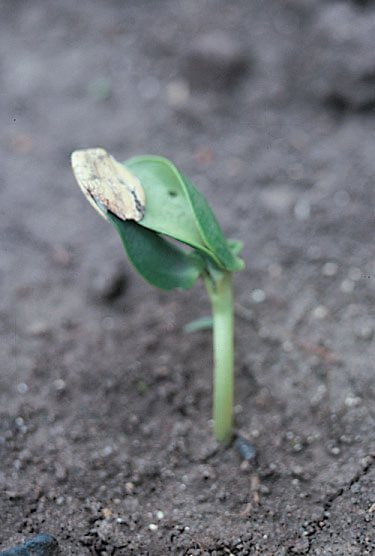by Joan Mitchell, CSJ

The course was Written English my first year in college. “Write about what you know,” my professor said. So I did. I wrote about the 30 acres of soybeans I had cultivated with such care the previous summer to earn my first-year tuition at the College of St. Catherine. Two semesters cost only $400 then. Doesn’t sound like much, but it would be like earning $10,000 today.
Farmers don’t cultivate corn and beans three times through anymore the way I had to. They use herbicides and don’t believe in turning the soil over and losing the moisture. Maybe they don’t hang their dreams on small green plants shining with dew as they ride up and down the rows in the morning sun, but I did.
Dad lumbered up the back steps and puffed into the kitchen, home for supper. “The corn is in the ground, 500 acres planted,” he announced, his face still cold and red from planting in the fields on this windy day. But wind-burned or not, his eyes were smiling, and he took my hands as if he were about to jig. “And, I planted your beans for college, too.”
“Good,” said Mother, as she glanced at Dad, then continued stirring her gravy. “Let’s hope we get rain.”

So the corn is planted, I thought, and the beans, too. To me this meant working again in the fields, day after day, all day from the Monday after my high school graduation until the end of July. This year riding the tractor had a new purpose: this fall 30 acres of soybeans would be mine to pay for my first year of college.
On the Monday after I graduated, I headed for the tractor, filled its gas tank from our big red barrel and checked the oil. I had imagined working at the drive in and getting tips this summer, but Dad claimed 30 acres of beans could bring me much more money.
I walked around behind the tractor, stepped on the drawbar and then to the axle, swung up, and eased onto the cold metal seat behind the wheel. I always felt powerful driving this big machine. It started with a roar, and I drove off for the field.
The corn last planted had not come up yet, nor had my beans in the adjoining field. The spring weather was cool. What if the fields didn’t come up until July and I had to cultivate until September? I rolled down my pants legs, buttoned up my old army jacket around my throat, and pulled the earflaps of my hunting cap down to meet the jacket.
Dad followed me to the first field he had planted. The corn had sprouted and sprung up from behind a clump of dirt, or under an old corn cob, or just right up from the fine sandy soil. Yellowish, green leaves sprinkled the field in still faint long rows. “Go slow,” Dad commanded as he got me started. “The corn is small. If you don’t go slow, you’ll cover it.”
“Okay,” I answered, shoving the tractor into gear and starting the first round. Each corn leaf shone brightly in the morning sun. Sparkling drops of dew salted the leaves of every sprout. As the cultivator shovels turned over the soil, moist on the top but dry under the surface, bits of dirt clung to the wet sprouts.
Sometimes I plowed out a hill of corn or threw sod over the row of beans. Often then I stopped, climbed down from the tractor, and tried to tuck the exposed roots of the corn back beneath the soil or remove the sod and lightly brush the dust from the small, shiny-leafed, bean plants.
Summer had arrived by the time we started through the corn the second time. The sprouts had grown ankle-height and deep green in the warmer sun. A little rain and the corn would be “knee high by the Fourth of July.” Cultivating went faster up and down the now distinct rows.
My hands developed hard calluses from guiding the steering wheel, and my insides were shaken from riding the bumpy fields, but St. Catherine’s would be worth it. I had so much time to think and figure. Thirty acres and an average crop should go at the least 10 bushels an acre at $2 a bushel; that’s $600, but even $400 would do; it would pay the tuition. College, some new clothes, money for concerts — grow, beans, grow.
The beans were blooming, and every stalk of corn bent beneath the tractor axle as the shiny cultivator shovels uprooted yellow-flowering mustard as high as the beans themselves. This was the last time through the corn and beans. The green plants drank in the late July sun.

Stopping in the middle of the cornfield, I shut the tractor off. Sitting in the warm silence, I could hear the corn grow, snapping and unwinding upwards. Tassels appeared scattered throughout the field. Another month and the corn stalks would be loaded with ears full of golden, dented kernels—if we got rain.
And the beans stood in long, full rows like low green hedges. Their pods were forming where the blossoms had been. Maybe I can pay for some of my board and room, too, I thought.
I had earned a vacation and in middle August left with our school drum corps for three days of marching and competition. Those three days were scorchers. The temperature hit a hundred plus the third day. The fresh tar on the city streets melted and stuck to our feet as we marched.

The drum corps returned home that afternoon. We went through Paynesville and Belgrade and rolled along the highway toward home. We spotted the water tower. Then I saw south of the highway our 105-acre cornfield that took two weeks to cultivate the first time.
It was burnt.
The once-green cornstalks stood scorched and wilted, their roots choked in the parched sandy soil. The corn was gone, killed before ears could even form, and the beans, stunted, had developed only 10 pods instead of the 30 or 50 necessary for a 10-bushel yield. Rain came and broke the hot spell, but it fell on brown, crisp corn leaves and 10-pod bean stalks.
Dad always said he’d had two good years on the farm — 1947 and next year. The year of my beans and dreams, I made only $240 toward my tuition, maybe 40 cents an hour for a summer’s hard work. What I didn’t see then was that my beans produced another kind of crop — these words, this story — my first success as a writer. My field of beans gave me a future.
